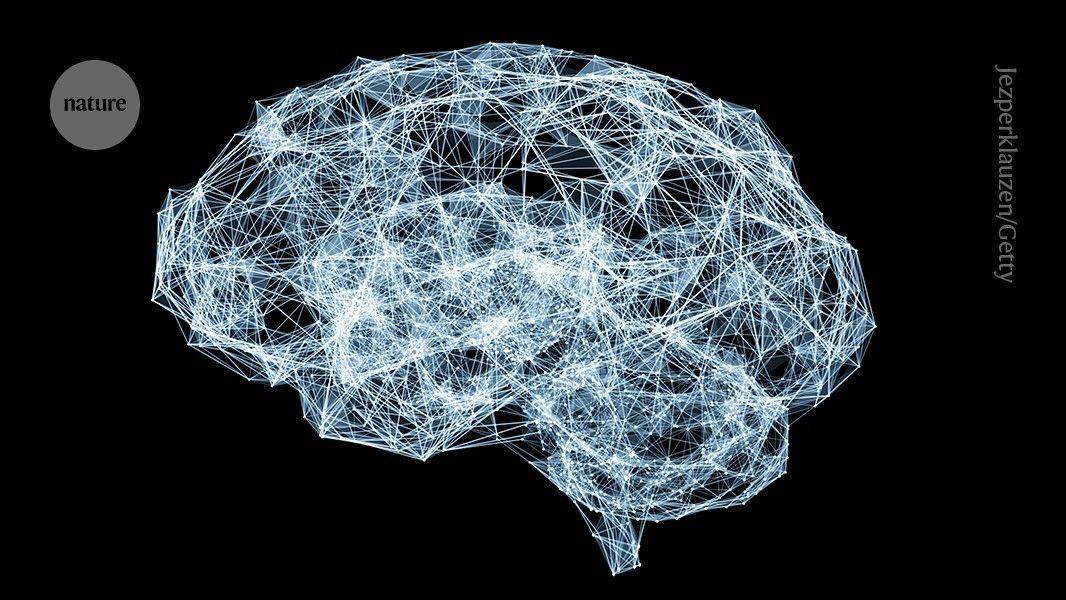AI Model Mimics Human Goal-Setting Through Game Creation
2 Sources
2 Sources
[1]
AI model mimics human goal-setting through game creation
While we are remarkably capable of generating our own goals, beginning with child's play and continuing into adulthood, we don't yet have computer models for understanding this human ability. However, a team of New York University scientists has now created a computer model that can represent and generate human-like goals by learning from how people create games. The work, reported in the journal Nature Machine Intelligence, could lead to AI systems that better understand human intentions and more faithfully model and align with our goals. It may also lead to AI systems that can help us design more human-like games. "While goals are fundamental to human behavior, we know very little about how people represent and come up with them -- and lack models that capture the richness and creativity of human-generated goals," explains Guy Davidson, the paper's lead author and an NYU doctoral student. "Our research provides a new framework for understanding how people create and represent goals, which could help develop more creative, original, and effective AI systems." Despite considerable experimental and computational work on goals and goal-oriented behavior, AI models are still far from capturing the richness of everyday human goals. To address this gap, the paper's authors studied how humans create their own goals, or tasks, in order to potentially illuminate how both are generated. The researchers began by capturing how humans describe goal-setting actions through a series of online experiments. They placed participants in a virtual room that contained several objects. The participants were asked to imagine and propose a wide range of playful goals, or games, linked to the room's contents -- e.g., bouncing a ball into a bin by first throwing it off a wall or stacking games involving building towers from wooden blocks. The researchers recorded the participants' descriptions of these goals linked to the devised games -- nearly 100 games in total. These descriptions formed a dataset of games from which the researchers' model learned. While human-goal generation may seem limitless, the goals study participants created were guided by a finite number of simple principles of both common sense (goals must be physically plausible) and recombination (new goals are created from shared gameplay elements). For instance, participants created rules in which a ball could realistically be thrown in a bin or bounced off a wall (plausibility) and combined basic throwing elements to create various games (off the wall, onto the bed, throwing from the desk, with or without knocking blocks over, etc., as examples of recombination). The researchers then trained the AI model to create goal-oriented games using the rules and objectives developed by the human participants. To determine if these AI-created goals aligned with those created by humans, the researchers asked a new group of participants to rate games along several attributes, such as fun, creativity, and difficulty. Participants rated both human-generated and AI-produced games, as in the example below: Human-created game: AI-created game: Overall, the human participants gave similar ratings to human-created games and those generated by the AI model. These results indicate that the model successfully captured the ways humans develop new goals and generated its own playful goals that were indistinguishable from human-created ones. This research helps further our understanding of how we form goals, and how these goals can be represented to computers. It can also help us create systems that aid in designing games and other playful activities.
[2]
AI generates playful, human-like games
While we are remarkably capable of generating our own goals, beginning with child's play and continuing into adulthood, we don't yet have computer models for understanding this human ability. However, a team of New York University scientists has now created a computer model that can represent and generate human-like goals by learning from how people create games. The work, reported in the journal Nature Machine Intelligence, could lead to AI systems that better understand human intentions and more faithfully model and align with our goals. It may also lead to AI systems that can help us design more human-like games. "While goals are fundamental to human behavior, we know very little about how people represent and come up with them -- and lack models that capture the richness and creativity of human-generated goals," explains Guy Davidson, the paper's lead author and an NYU doctoral student. "Our research provides a new framework for understanding how people create and represent goals, which could help develop more creative, original, and effective AI systems." Despite considerable experimental and computational work on goals and goal-oriented behavior, AI models are still far from capturing the richness of everyday human goals. To address this gap, the paper's authors studied how humans create their own goals, or tasks, in order to potentially illuminate how both are generated. The researchers began by capturing how humans describe goal-setting actions through a series of online experiments. They placed participants in a virtual room that contained several objects. The participants were asked to imagine and propose a wide range of playful goals, or games, linked to the room's contents -- e.g., bouncing a ball into a bin by first throwing it off a wall or stacking games involving building towers from wooden blocks. The researchers recorded the participants' descriptions of these goals linked to the devised games -- nearly 100 games in total. These descriptions formed a dataset of games from which the researchers' model learned. While human-goal generation may seem limitless, the goals study participants created were guided by a finite number of simple principles of both common sense (goals must be physically plausible) and recombination (new goals are created from shared gameplay elements). For instance, participants created rules in which a ball could realistically be thrown in a bin or bounced off a wall (plausibility) and combined basic throwing elements to create various games (off the wall, onto the bed, throwing from the desk, with or without knocking blocks over, etc., as examples of recombination). The researchers then trained the AI model to create goal-oriented games using the rules and objectives developed by the human participants. To determine if these AI-created goals aligned with those created by humans, the researchers asked a new group of participants to rate games along several attributes, such as fun, creativity, and difficulty. Participants rated both human-generated and AI-produced games, as in the example below: Overall, the human participants gave similar ratings to human-created games and those generated by the AI model. These results indicate that the model successfully captured the ways humans develop new goals and generated its own playful goals that were indistinguishable from human-created ones. This research helps further our understanding of how we form goals, and how these goals can be represented to computers. It can also help us create systems that aid in designing games and other playful activities. The paper's other authors are Graham Todd, an NYU doctoral student, Julian Togelius, an associate professor at NYU's Tandon School of Engineering, Todd M. Gureckis, a professor in NYU's Department of Psychology, and Brenden M. Lake, an associate professor in NYU's Center for Data Science and Department of Psychology. The research was supported by grants from the National Science Foundation (1922658, BCS 2121102).
Share
Share
Copy Link
New York University scientists have developed an AI model that can generate human-like goals by learning from how people create games, potentially leading to better understanding of human intentions and more effective AI systems.

AI Model Learns to Generate Human-Like Goals
Researchers at New York University have developed an innovative AI model capable of representing and generating human-like goals by learning from how people create games. This groundbreaking study, published in the journal Nature Machine Intelligence, could pave the way for AI systems that better understand human intentions and more accurately model and align with our goals
1
2
.The Challenge of Modeling Human Goal-Setting
Despite significant advancements in AI and computational work on goal-oriented behavior, current AI models fall short of capturing the richness and complexity of everyday human goals. To address this gap, the research team, led by Guy Davidson, an NYU doctoral student, focused on studying how humans create their own goals or tasks
1
.Davidson explains, "While goals are fundamental to human behavior, we know very little about how people represent and come up with them -- and lack models that capture the richness and creativity of human-generated goals"
2
.Experimental Approach
The researchers conducted a series of online experiments to capture how humans describe goal-setting actions:
- Participants were placed in a virtual room containing various objects.
- They were asked to propose a wide range of playful goals or games linked to the room's contents.
- Nearly 100 games were recorded, forming a dataset from which the AI model learned
1
2
.
Key Findings
The study revealed that human goal generation, while seemingly limitless, is guided by two primary principles:
- Common sense: Goals must be physically plausible.
- Recombination: New goals are created from shared gameplay elements
1
.
For instance, participants created rules where a ball could realistically be thrown into a bin or bounced off a wall, and combined basic throwing elements to create various games
2
.Related Stories
AI Model Development and Evaluation
The researchers trained the AI model to create goal-oriented games using the rules and objectives developed by human participants. To assess the model's performance:
- A new group of participants rated both human-generated and AI-produced games on attributes such as fun, creativity, and difficulty.
- The results showed similar ratings for both human-created and AI-generated games, indicating that the model successfully captured human goal development processes
1
2
.
Implications and Future Applications
This research provides a new framework for understanding how people create and represent goals, which could lead to:
- More creative, original, and effective AI systems.
- AI systems that can assist in designing human-like games and other playful activities.
- Improved understanding of human goal formation and representation in computers
1
2
.
The study, supported by grants from the National Science Foundation, involved contributions from Graham Todd, Julian Togelius, Todd M. Gureckis, and Brenden M. Lake, all affiliated with various departments at New York University
2
.References
Summarized by
Navi
[1]
[2]
Related Stories
Recent Highlights
1
Google launches Gemini 3 Flash as default AI model, delivering speed with Pro-grade reasoning
Technology

2
OpenAI launches GPT Image 1.5 as AI image generator war with Google intensifies
Technology

3
OpenAI launches ChatGPT app store, opening doors for third-party developers to build AI-powered apps
Technology








